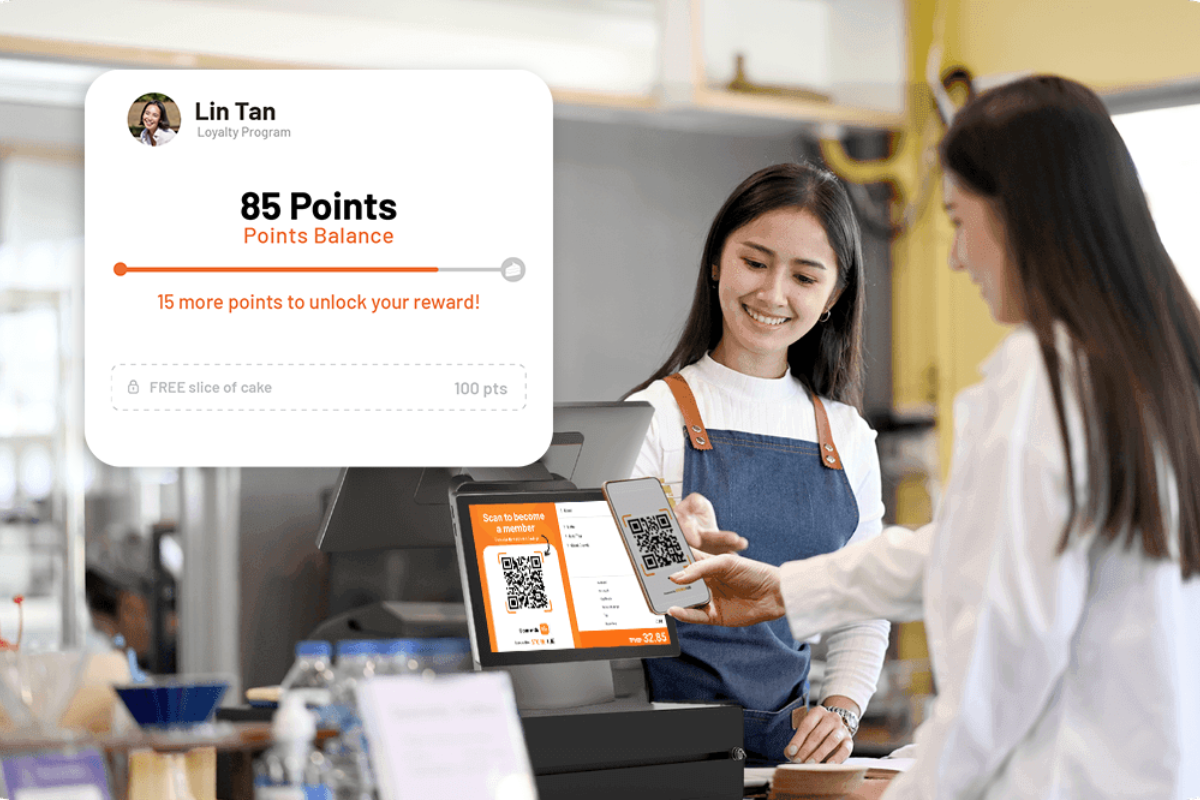When was the last time you really looked at your menu — not as the owner, but as a customer?
Because in the Philippines’ fast-moving F&B industry, customers make decisions quickly — and a poorly designed menu can cause hesitation, confusion, or even second thoughts about ordering.
A confusing layout, too many choices, or hard-to-read fonts can quietly slow down service, frustrate diners, and cause your best dishes to be overlooked. Over time, these small friction points add up — lowering your average order value, reducing table turnover, and ultimately impacting your profitability.
Yet many cafés, restaurants, bars, and restobars don’t realize their menu design is quietly working against them until sales or customer satisfaction starts to slip.
In this article, we’ll break down the most common menu design mistakes that could be turning customers away — and show you how simple, strategic improvements can help you speed up orders, boost revenue, and create a better dining experience.
What Are The Common Menu Mistakes That Turn Customers Away?
Having Too Many Menu Items
It might seem smart to offer a wide range of options, but a menu with 50 or 60 items can overwhelm customers instead of exciting them. When diners are faced with too many similar choices, it causes decision paralysis — leading to slower orders, lower spending, and frustration during peak hours.
Research from Caltech shows that while more options seem attractive at first, the brain struggles to evaluate too many at once. After around 8 to 15 options, the decision-making process becomes harder and less rewarding, resulting in delayed or poorer choices.
For example, if you’re running a café and offering 30 different variations of coffee, customers might end up taking too long to decide — slowing down your table turnover and reducing the number of orders you can serve during busy periods.
Offering variety is important, but overwhelming customers with too many similar options can negatively affect your sales and the flow of your operations.
Designing Menus To Be Difficult to Read

Small fonts, elaborate cursive typography, poor contrast, and dim lighting can make a menu difficult to read — and if customers struggle just to see what’s available, they’re much less likely to order confidently or spend more.
This is a common problem, especially in trendy cafés and bars where the ambience is great, but menus force customers to squint or pull out their phone torchlights just to place an order. It creates frustration before the meal even starts — slowing down service, lowering satisfaction, and pushing diners to rush their choices or skip add-ons like drinks, sides, or desserts.
Physical menus also suffer wear and tear quickly, especially in high-volume F&B businesses. Torn pages, sticky stains, faded printing, or crumpled covers not only make menus hard to read, but also create a negative impression on your F&B business’ hygiene.
For example, a customer flipping through a ripped, greasy menu at a café is more likely to question the overall cleanliness and quality of the business — even if the food is great.
Having Poor Menu Layout with No Clear Flow
A confusing menu layout makes it harder for customers to decide quickly. When dishes are scattered randomly without clear sections, diners waste time hunting for what they want — leading to slower orders, lower spending, and missed opportunities to upsell sides, drinks, or desserts.
For example, if you’re running a restaurant and your starters, mains, and desserts are scattered across different pages with no clear structure, customers are more likely to miss key dishes or get frustrated while ordering — especially during busy lunch or dinner hours.
Confused diners also tend to flag down waiters to ask questions, which takes up valuable staff time that could be better spent preparing food or turning over tables faster.
How to Improve Your Menu Design and Boost Sales
Keep Menus Focused and Categorized Clearly

Photo Credit: Delgado.112 Official Website
When it comes to effective menu design, less is more — and structure makes all the difference.
Limiting each section to around 6–10 items helps avoid overwhelming customers, speeds up decision-making, and encourages higher spending. Organizing your menu logically — from appetizers to mains, desserts, and drinks — creates a natural flow that makes browsing and ordering easier.
A great example of this is Delgado.112, a well-known restaurant and bar in Quezon City.
Instead of packing dozens of dishes into one overwhelming list, Delgado.112 neatly separates its offerings into clear, distinct categories: Appetizers, Main Dishes, Desserts, and Drinks. Each section is tightly curated with just six carefully crafted items, keeping the menu concise, organized, and easy for customers to navigate without feeling overwhelmed.
What makes their menu even more effective is how each item comes with a short but vivid description. In their Appetizers section, for example, they introduce dishes like the Mariscos Fiesta Pintxo, a delightful mix of fresh seafood skewers bursting with vibrant, zesty flavors, and the Brie Quezo Jamón, a comforting blend of creamy brie and savory ham.
These one-liner descriptions help diners immediately understand what to expect, trigger cravings, and make faster ordering decisions — all without needing to ask waitstaff for more clarification.
By keeping their menu focused and pairing every item with inviting descriptions, Delgado.112 makes it easy for customers to choose quickly, feel excited about their orders, and spend more — all while enjoying a smoother, more satisfying dining experience.
Use Strategic Labels to Boost Underperforming Dishes
Sometimes a dish can taste amazing — but if it doesn’t stand out on your menu, it can easily underperform.
Often, customers hesitate simply because they’re unsure what’s popular, what’s recommended, or what’s worth trying. This is where smart labeling can make a big difference.
For example, if you notice a rich, flavorful dish on your menu isn’t selling as well as expected, you don’t necessarily have to change the recipe or lower the price. Simply labeling it as a “Bestseller” or “Chef’s Recommendation” can immediately draw more attention and encourage more customers to order it.
Strategic labels create a subtle sense of curiosity and trust. They act as social proof — signaling to customers that the dish is already popular and worth trying — which helps remove decision-making hesitation.
Customers naturally feel more confident when their choices are validated by recommendations, making them more willing to explore dishes they might have otherwise overlooked.
By spotlighting high-quality but slower-moving items this way, F&B businesses can boost the performance of their menus without needing to constantly run promotions, offer discounts, or introduce new items.
When done right, strategic labeling is a simple but powerful tool to help maximize your menu’s potential and drive more sustainable, long-term sales.
Optimize for Mobile-Friendly QR Menus

In the Philippines’ competitive F&B industry, QR ordering has become a must-have for cafés, restaurants, bars, and restobars.
Customers today expect the convenience of browsing, ordering, and paying — all from their smartphones.
However, just offering a QR code isn’t enough.
Many F&B businesses make the mistake of simply linking to a static PDF uploaded on Google Drive or Canva. While it might seem like a quick fix, these files often load slowly, are difficult to navigate on mobile screens, and offer no interactive features — leading to a frustrating customer experience.
Imagine being hungry, sitting down, scanning a QR code – only to wait for a slow-loading file, pinch and zoom to read tiny fonts, and scroll endlessly to find what you want.
By the time customers are ready to order, they’re already frustrated which can cause slower service, rushed decisions, and lower average spend.
That’s why it’s important to think beyond just “having a QR code” and focus on delivering a fast, mobile-friendly ordering experience. Providing both a well-designed physical menu and a seamless digital QR menu gives diners flexibility, catering to different preferences and improving the overall dining experience.
Instead of parking a static file online, invest in a proper QR ordering system that’s designed for speed and usability. Customers should be able to browse clearly organized sections, view high-quality food photos, read short, enticing descriptions, customise their orders easily, and pay — all without needing to flag down staff.
With StoreHub’s QR Order & Pay, customers don’t just view the menu — they can order, pay securely, and even claim cashback rewards right from their smartphones. Meanwhile, orders are automatically sent to the kitchen, saving valuable time, reducing human error, and freeing up staff to focus on preparing great food and delivering faster service.
Whether it’s for dine-in, takeaway, or delivery, StoreHub’s QR Order & Pay lets you update menus effortlessly across all channels — keeping everything accurate, fresh, and customer-friendly without the hassle of manual reuploads or costly reprints.
Final Thoughts
A well-designed menu does more than list your food. It also shapes how customers interact with your brand, how quickly they order, and how much they’re likely to spend.
When your menu is cluttered, hard to navigate, or poorly structured, it adds unnecessary stress to the dining experience — often leading to slower service, smaller bills, and missed upselling opportunities. And over time, these small issues can quietly affect your bottom line.
By simplifying your layout, focusing on your sections, using strategic labels, and offering an easy QR ordering experience, you make it easier for customers to order confidently and enjoy their visit, which translates to better reviews, higher revenue, and stronger customer loyalty.





Recent Comments